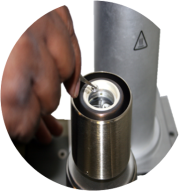The greatest hazard that threatens process vessels is pressure. It is rare that temperature alone will cause a vessel to fail. Therefore it is critical to identify, and then mitigate or prevent the potential for overpressurization of your vessels.
There are many potential sources of pressure:
OR
There are three key steps to take to avoid or appropriately protect against an overpressure situation:
Thermal Screening: quantify heat associated with process chemistry and the thermochemistry of materials involved with the process
Reaction Calorimetry: determine heat and gas removal requirements to control the desired process chemistry
Adiabatic Calorimetry: determine the consequences of potential upset scenarios such as failed equipment or improper procedures, and mitigate the consequences by determining appropriate control or safety systems (SIS, SIL, pressure relief, etc.)

In addition to the evaluation of literature data and performing theoretical calculations, small-scale instruments such as the Differential Scanning Calorimeter (DSC) or Advanced Reactive System Screening Tool (ARSST) can be used to quickly thermally screen starting materials, process streams, and products to identify the existence of hazards.
 Is there thermal decomposition of raw materials, intermediates, products, etc.?
Is there thermal decomposition of raw materials, intermediates, products, etc.?Reaction calorimetry is a tool that is used to understand the equipment or process requirements to perform a chemical process safely. Typical instruments are the RC1 (Mettler Toledo) and the CPA202 (ChemiSens).

Adiabatic calorimetry is a tool that can simulate large-scale vessels to determine the consequences of a runaway reaction. This can be performed in instruments such as the Vent Sizing Package 2 (VSP2), ARSST, or Accelerating Rate Calorimeter (ARC).

Relief System Sizing gives introductory guidance to chemically reactive vent sizing using either VSP2 or ARSST data.
